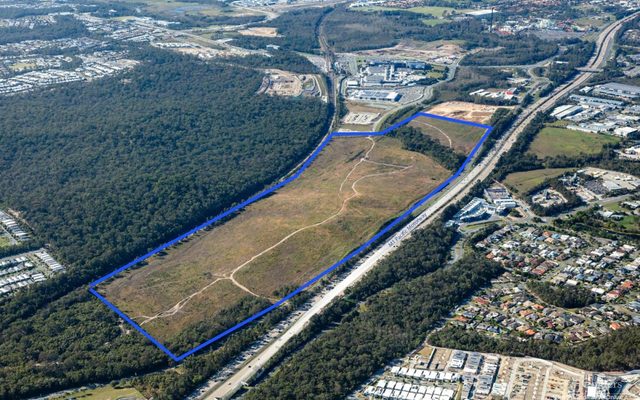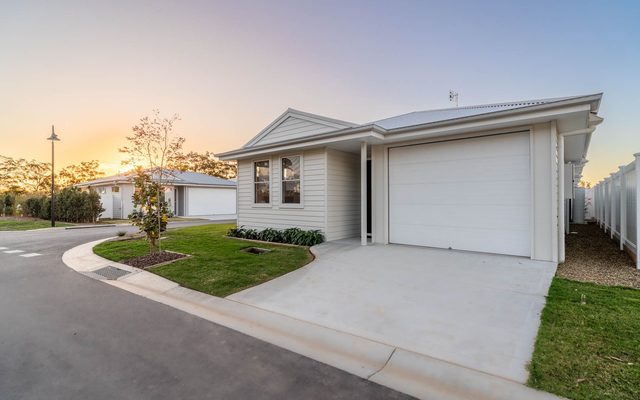This article is from the Australian Property Journal archive
QUEENSLAND’S property market continued to show signs of strength with residential land values rising in Brisbane, Toowoomba, Sunshine Coast, Gold Coast and Cairns. However, values in areas affected by the resources industry went backwards, according to the latest Valuer-General report.
The QLD Valuer-General report saw 24 local government areas receive annual new valuations this year. The rateable LGAs represented approximately 72% of all properties in the state.
QLD Valuer-General Neil Bray said generally, across the state there has been limited sales activity in rural markets.
“This has resulted in a continued static to softening of land values within the grazing, horticultural, small crop and dryland farming industries. All industries are currently dealing with the effects of a long-term and widespread drought, restrictive financial policies and rising costs.
“It is expected that these trends, where potential purchasers still remain cautious, will continue until there is an improvement in weather patterns and there is more confidence in the economy,” Bray said.
The 2016 annual valuation found:
– 12 LGAs recorded an overall increase between 4.2% (Lockyer Valley) and 18.5% (Toowoomba). Of these, nine recorded increases of more than 5%.
– 12 LGAs recorded an overall decrease in value between 2.3% (Fraser Coast) and 17.9% (Mount Isa). Of the 12 LGAs that decreased, six decreased 0–5%, two 5–10% and the rest decreased more than 10%.
Brisbane
The Valuer-General reports median values by suburb for residential land values in Brisbane. Of the 181 suburbs in this group, the Valuer-General’s median valuation remained static in 42 suburbs whereas eight suburbs showed a reduction in their median value.
An increase of up to $50,000 was reported in 96 suburbs, while 35 suburbs increased more than $50,000. The overall median value for single unit residential across Brisbane increased 9.9% to $390,000.
As for the multi-unit market, interest in new apartments being built in the fringe CBD grew over the past few years as developers actively competed for the prime sites. This sector saw a 14.3% increase in the overall valuation level, with some moderate to large increases in CBD fringe suburbs including South Brisbane, West End, and Kangaroo Point.
While the traditional commercial markets remained quiet, the impact of developer and investor interest in these sites resulted in the value of commercial sites also rising. Overall, the total value of commercial land rose by over 24%. The issued valuations for the industrial market rose only 2.7% with limited vacant or lightly improved sales across the sector despite a number of improved sales in the distribution sector of the industrial market.
Gold Coast
The Gold Coast City median residential values increased overall by 13.5%. Moderate increases were experienced in the major unit development site markets of Surfers Paradise, Broadbeach, Southport, Labrador, Palm Beach and Coolangatta. Multi-unit market movement graded down to minor increases away from the beach in suburbs such as Robina and Varsity Lakes.
Commercial land values generally increased in value, impacted by falling vacancy rates and demand for mixed use development. The industrial land market increased overall, but at a slightly more subdued rate compared to the commercial market
Rural
Bray said across Queensland, limited sales activity in many rural markets including grazing, broadacre farming, sugar cane and horticulture, resulted in continued static land values.
Any increase in land values was influenced by the strengthening of beef commodity prices. The grazing and broadscale farming markets are starting to rise from the bottom of the market cycle. The Eastern Young Cattle Index reached a record high at $600.75c/kg in January 2016, compared with $439.25c/kg at the same time in 2015.
“These trends, where potential purchasers remained cautious, were likely to continue while waiting on improvements in weather patterns and more confidence in the economy.
“In the western pastoral zone, the market peaked around 2008 and then fell back to around 2005–06 value levels. This market continued to be subdued, with very few sales transactions,” Bray said.
Sales of rural land purchased by resource companies for the purpose of mining or other extractive industry are not used to determine statutory land values of rural land. This market activity has now slowed due to the state of resource sector, and respective markets are now being influenced by rural landowners.
The Australian Property Institute Queensland President Bart Mead said approximately 1.15 million valuation notices will be issued to landowners in 24 of Queensland’s 62 rateable local government areas.
“These 1.15 million valuations are used to calculate local government rates, state land tax and state land rental (for leasehold land).
“The issuing of valuation notices is the culmination of 12 months of work by property valuers within the Department of Natural Resources and Mines. These experienced professionals were tasked with the massive role of undertaking valuations for the approximately 72% of properties in Queensland which have been issued valuation notices,” Mead said.
“The arrival of a new valuation notice can be a confusing time so it is important landowners understand the valuation notice they receive and, to that end, the Department of Natural Resources & Mines offers a range of educational tools on their website to assist landowners,” he added.
Under the Land Valuation Act 2010 statutory valuations are undertaken using either site value or unimproved value.
Site value is the amount that non-rural land could be expected to sell for without any structural improvements on the land (e.g. houses, buildings, fences). It takes into account the value of any site improvements which have been made to the land, which may include filling, clearing and drainage works.
Land that is zoned rural or equivalent under a local government planning scheme is valued using an unimproved value methodology. It is the amount that rural land could be expected to sell for without any structural improvements such as houses, fences, clearing, levelling and earthworks.
“Site or unimproved value is not necessarily a reflection of what a property is worth if it were to be sold. Members of the public who would like a valuation of their property undertaken to understand the market value of their property should contact the Australian Property Institute for details of property valuers in their local area,” Mead said.
Australian Property Journal




